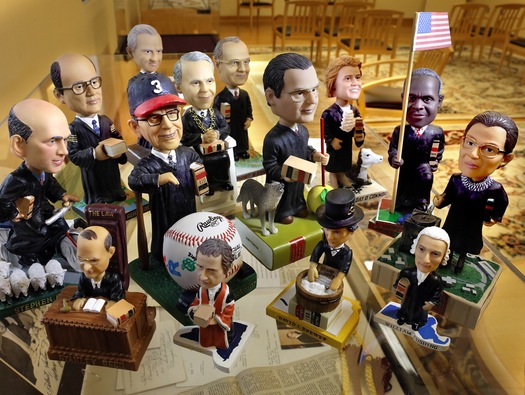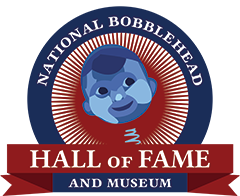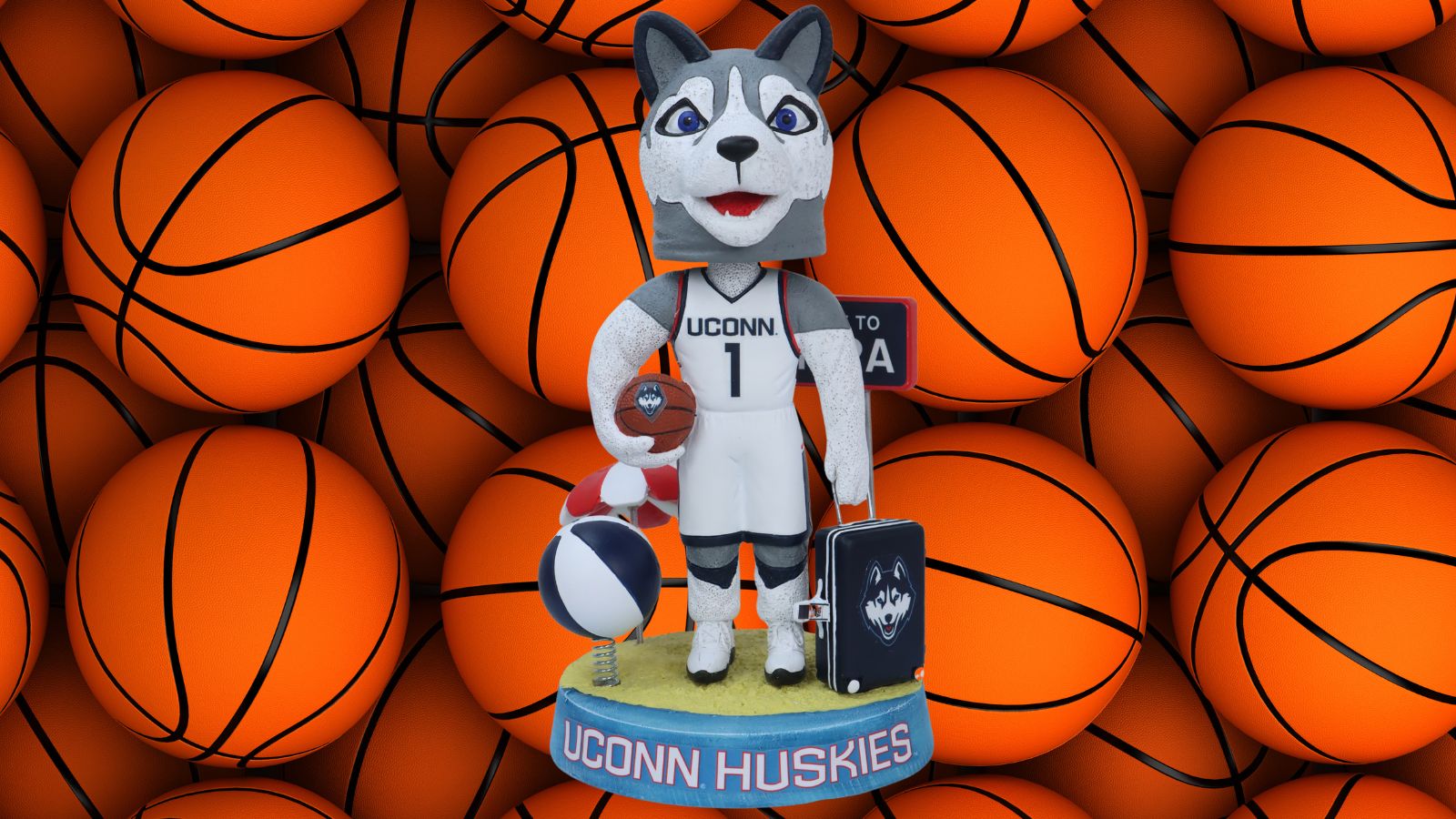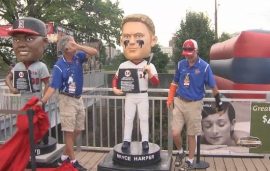
From StarTribune by Kim Ode
In a legal loophole between “Is nothing sacred?” and “Omigod!” are the bobblehead justices of the U.S. Supreme Court.
Yes, Rehnquist, Brandeis and Blackmun now share more in common with Hrbek, Carew and DiMaggio than just the 1922 Supreme Court ruling protecting Major League Baseball from antitrust laws. (Federal Baseball Club v. National League, 259 U.S. 200.)
A rare and complete collection of the 22 justices currently cast in ceramic now is in session at the University of Minnesota’s Mondale Hall, courtesy of a gift by James Rosenbaum, a former U.S. district court judge for Minnesota from 1985 to 2008, and its chief judge for those last seven years.
His first bobblehead was a surprise witness, so to speak.
“I was in my office one day and I get this box and there is a William Rehnquist bobblehead,” Rosenbaum said. “I just broke out in laughter. He’s the chief freaking justice of the United States and I have a bobblehead of him.”
The doll came without explanation, only that it was from the Green Bag, an Entertaining Journal of Law.
The Green Bag is a quarterly legal journal founded by Ross Davies, a law professor at George Mason University in Virginia who has a knack for being both amusing and informing. He’s said that the bobblehead idea came to him in the shower.
While droll, Davies also had a serious intent, writing annotations of major decisions and working with designers to add telling details to each doll that illuminate legal history.
Sandra Day O’Connor stands on a map of the hodgepodge Texas congressional districts that she ruled were racial gerrymandering. (Bush v. Vera, 517 U.S. 952.) Justice John Paul Stevens’ golf club is a nod to his decision in favor of disabled golfer Casey Martin using a golf cart. (PGA Tour, Inc. v. Martin, 532 U.S. 661.)
One of Rosenbaum’s favorites is Harry Blackmun, who taught and practiced law in Minnesota, thus his baseball hat in Twins colors. No logo, though. Major League Baseball wouldn’t permit its use, Rosenbaum said. Instead, there is a “3” for his being President Richard Nixon’s third nominee for a vacancy.
He delightedly pointed out that the wooden bat in Blackmun’s hand — for his vote upholding MLB’s antitrust exemption (Flood v. Kuhn 407 U.S. 258) — was made by Hillerich & Bradsby Co., of the famed Louisville Sluggers, one of the smallest Sluggers ever made.
“In the law, these are rock stars,” Rosenbaum said of why such artistry is worthwhile. “You’re talking about Mick Jaggers, right down the line.”
If it please the court
After Rehnquist, other bobble-justices followed in batches of 1,000 to 2,000, made “for the joy of it,” according to the Green Bag’s website — so joyously that they are given out pro bono, or for free.
But as anyone who’s watched Perry Mason or Denny Crane knows, “free” can still come at a price.
Some (but not all) Green Bag subscribers get a certificate that may (or may not) be redeemable for a doll, “and we arbitrarily and capriciously give certificates to some folks who are not subscribers,” the website states.
Reasons for refusing a certificate include (a) a shortage of dolls and (b) a suspicion of theft or forgery, but also “(c) rudeness by a person seeking to redeem a certificate, and (d) caprice.”
Objections? Overruled.
Rosenbaum, 71, a subscriber and occasional Green Bag contributor who apparently has been lucky, honest, polite and not subject to caprice, has received each bobblehead over the years, 22 in all. He also happens to be one of the people who get additional bobbleheads to donate to legal groups seeking an auction item for fundraisers.
We rest our case
Bobbleheads have had a (cough) up and down history.
They weren’t widely known until the late 1950s, then took off in 1960 when Major League Baseball offered generic dolls for each team and special ones for Mickey Mantle, Willie Mays, Roger Maris and Roberto Clemente.
By the 1970s, other sports joined in, but the trend again faded until the 1990s, when new materials made the dolls both sturdier and cheaper. Now there are bobbleheads for athletes, musicians, movie stars, religious figures, scientists, the Founding Fathers and “Star Wars” characters, not to mention customized bobbleheads for the person who has everything. (Rosenbaum’s law clerks presented him with his own nodder upon retirement.)
The exhibit itself is in the Riesenfeld Rare Books Research Center in Mondale Hall. There, curator Ryan Greenwood and special collections assistant librarian Barbara Berdahl have amplified the bobbleheads’ presence with related books from the center’s collection, such as a centuries-old copy of “The Federalist Papers.”
The exhibit is a big draw for law students, said Joan Howland, associate dean for information and technology at the law school, noting that they’ve had “great fun figuring out the significance of each bobblehead’s details, such as Justice Stevens’ golf club, Justice Scalia’s speared lemon, and Justice Blackmun’s baseball.”
The public can view the exhibit by appointment through the summer. Contact Greenwood at rgreenwo@umn.edu or call 612-625-7323 to schedule a tour.
Another option is to visit the Green Bag website at greenbag.org and click on “bobbleheads,” where you can more easily read the annotated material.
Perhaps these bobbleheads are the perfect symbol of impartial justice, with their ability to both nod “yes” and shake “no” at the same time.
Disagree? Take it up with the Court of Appeals.


